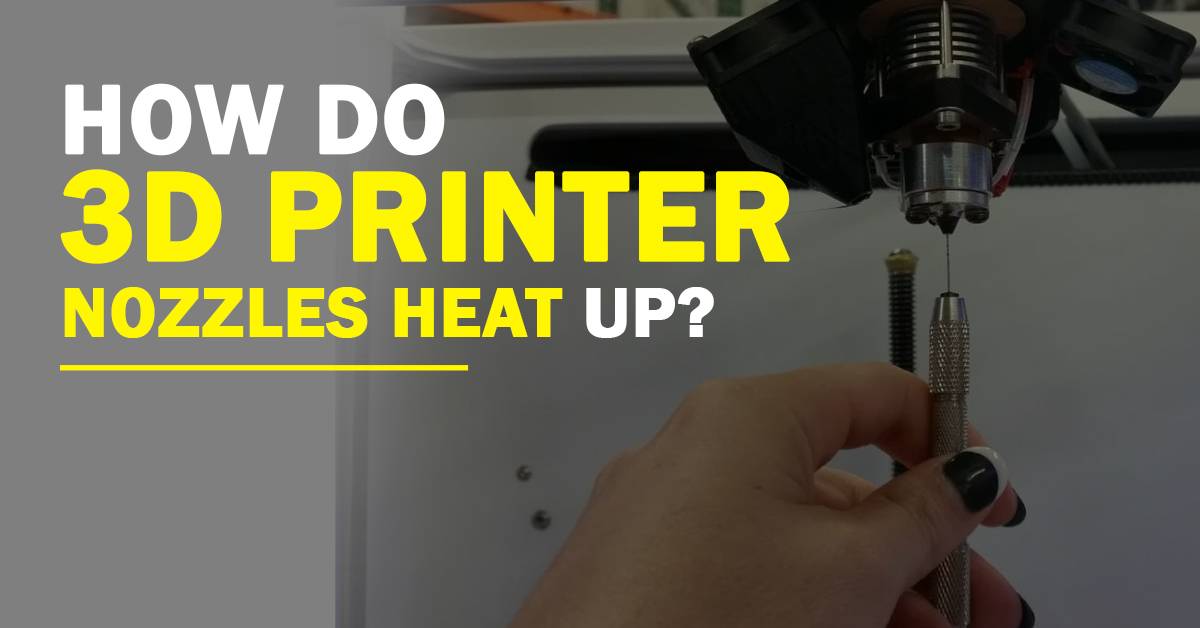Table of Contents
Toggle3D Printer Nozzles Heat Up?
As we all know 3D printing has been a game-changer in the manufacturing industry. There is one crucial component that is responsible for depositing the melted filament layer by layer is its nozzle. The nozzles heat up and have a consistent temperature. The nozzles heat up using a heater cartridge. The heater cartridge is a small, cylindrical device where the current is passed through the resistance wire and it heats up. The heater cartridge is surrounded by a heat sink, which helps to dissipate the heat. The heater cartridge is connected to the printer’s control board. The control board sends the signal to the heater cartridge which heats it.
The temperature of the nozzle is important because it helps in determining the melting point of the filament. The filament must be melted for proper extrusion through the nozzle of the printer. The nozzle’s temperature is set at around 180 to 240 degrees Celsius depending on the filament type. If the nozzle is not heated up properly the extrusion is not smooth. If the nozzle is too hot the filament will melt too quickly and it will cause the print to warp.
To maintain a temperature, the 3d printer employs a temperature sensor near the nozzle. The sensor helps in measuring the current temperature of the nozzle and provides feedback to the printer’s control system. There are two most commonly used sensors in 3D printers they are thermistors and thermocouples.
A thermistor is a type of resistor that changes the resistance with temperature variations. It is attached near the nozzle, its resistance value is measured by its printer’s control system. By noting the temperature the printer can adjust the temperature to maintain the desired temperature. Thermocouples are composed of two different metal wires joined together to form a junction. The voltage generated at this junction is proportional to the temperature.
The printer measures the voltage and uses it to calculate the temperature at the nozzle. By continuous checking of the control system, the nozzle remains at its desired temperature throughout the printing process. The size and shape of the nozzle can also be the factor of heating up. Small nozzles often tend to heat up faster due to reduced volume and lower thermal mass. Larger nozzles on the other hand often take more time to heat up due to increased thermal mass.
To control the heating process, the 3D printer often uses the Pulse Width Modulation Technique (PWM). it is a method where the power supplied to the heating element is rapidly switched on and off at a high frequency, adjusting its ratio from on-time to of-time, the printer can effectively regulate the power supplied to the heating element and consequently, control the temperature. This technique also helps in preventing overheating of the nozzle.







